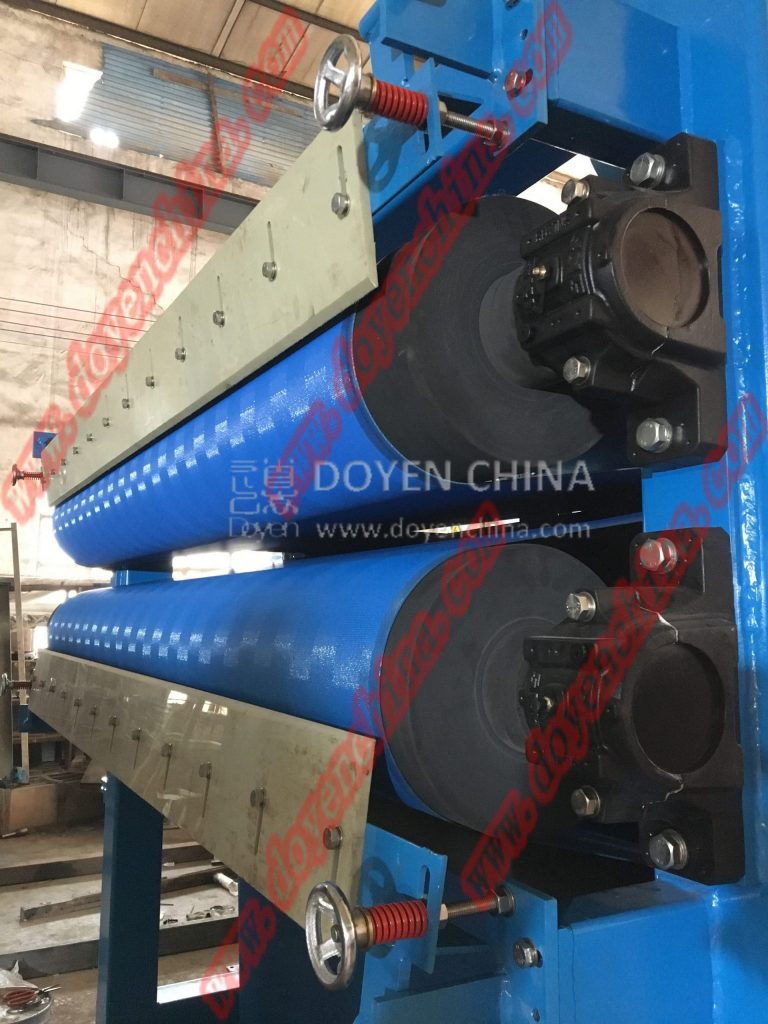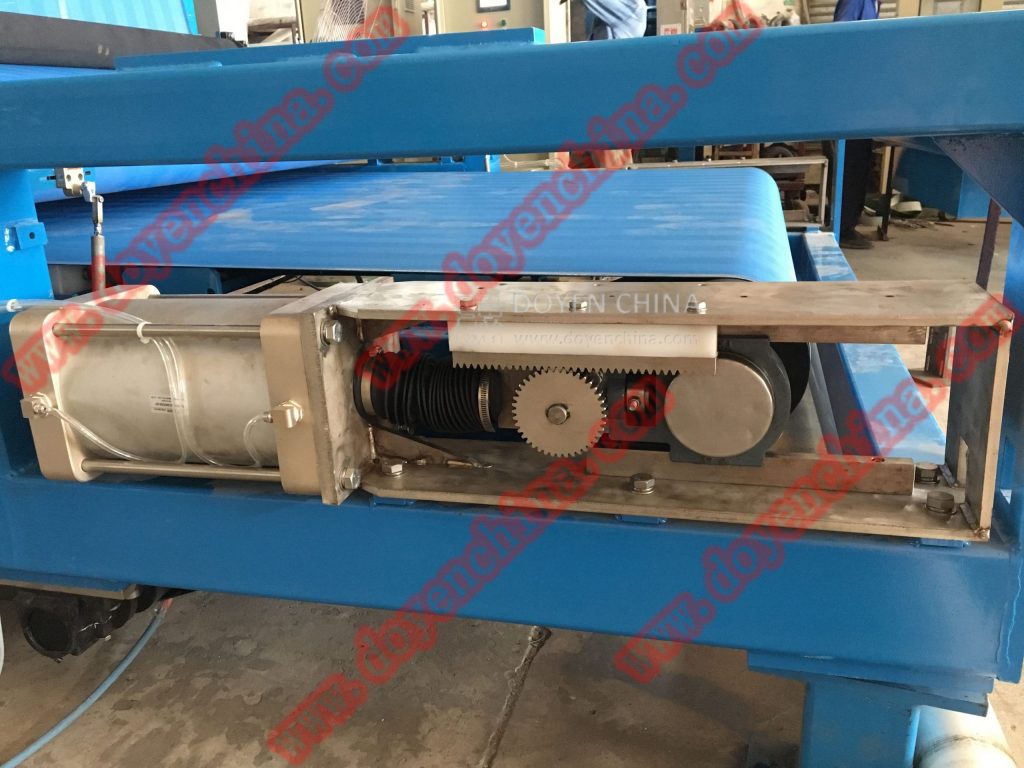

Tel:
+86-757-8633-0278
Email:doyen@doyenchina.com
Fax:+86-757-86287390
Address:Room 201, Building No. 24, Yicui Rose Garden, No. 2, Jihua 7 Road, Chancheng District, Foshan City, Guangdong Province, China 528000.
The importance of coal slime dehydration and drying is not only reflected in the proportion of equipment investment, but also affects storage and transportation, use, pollution control, and export commodity inspection indicators. Therefore, the problem of coal slime dehydration and drying has become increasingly prominent.
1. Discussion on the mechanism of coal-water combination
Coal is a complex organic compound. Observation through a microscope can see that the smaller particles that make up coal have a diameter of about 0,002^-0,003 microns and a height of about 0,0012-r0,0015 microns, which are called “grains”. . The larger particles composed of “grains” are about 0,01-v0,02 microns in size and are called “colloid particles”. Many fine pores are formed between “crystal grains” and “colloidal particles”, which are densely distributed inside and on the surface of the coal, forming numerous capillary pores. The smaller the capillary diameter, the greater the moisture in the coal.
The water in the crystal grains and colloidal particles formed by plant fiber after coal formation is in a compound state, called “crystal water”. The water absorbed into the coal body by capillary phenomenon is in a free state, which is the so-called “internal Moisture”. The internal moisture of coal varies in a wide range with the coal formation period and the length of carbonization, from 1 2% of anthracite to about 50% of lignite. The moisture absorbed by the capillary phenomenon exists in the coal body, and the mechanical action cannot remove it, and the internal moisture cannot be lost in the air-dried state.
In addition to crystal water and internal moisture, external moisture still exists on the surface of coal. This is an “adsorption phenomenon” in which a solid absorbs molecules, atoms or ions in the surrounding medium to its surface by intermolecular force.

The composition of coal is extremely complex, there are different coal rock components and mineral impurities, so the surface of coal has polar and non-polar heterogeneity. When there is polarity, an external electric field (positive or negative) appears on the coal surface. When it is non-polar, there is no electric field on the surface of coal, but oxidation can quickly change the non-polar surface of coal to polarity.
Water molecule is a non-linear structure and also has polarity. Since the electron cloud surrounding the highly negative oxygen atom is denser than the electron cloud surrounding the two hydrogen atoms, the water molecule is a permanent dipole with a large dipole moment. The adsorption on the coal-water interface is formed by the two characteristics of coal and water, and it is one of the main reasons why the water on the coal surface is not easy to remove.

As a result of physical adsorption, an adsorption and diffusion layer of water molecules is formed on the surface of the coal. The adsorption layer is a thin film that is close to the surface of the coal and has a thickness close to one molecule. It is firmly connected to the surface of the coal and moves together with the coal. The diffusion layer is located on the adsorption layer and can slide relative to the adsorption layer. Therefore, when coal and water move relatively, the sliding surface occurs at a distance d of about one molecule from the coal surface. At this time, due to the movement of the liquid and solid phases, a potential appears between the sliding layer and the remaining liquid, which is the so-called “electromotive potential”. This phenomenon of forming an adsorption layer and a diffusion layer of water molecules on the surface of coal due to physical adsorption is called “diffusion double layer” in chemistry.
2. Common methods and development of slime dewatering
Analyzing the mechanism of coal-water combination shows that: destroying the electric field force can make the surface water outside the coal surface diffusion layer escape to a large extent. Mechanical force is an effective measure commonly used to destroy electric field force and remove surface water.
Commonly used coal slime mechanical dehydration methods include filtration, filter press, belt filter press and sedimentation centrifugal dehydration.

1. Settling centrifuge
A decanter centrifuge is a device that uses centrifugal force generated by high-speed rotation to perform dehydration. Because coal has a greater specific gravity than water, it is thrown to the wall of the centrifuge bowl under the action of centrifugal force and scraped out by the spiral rotor. After adding the filter section, the sedimentation filter cake under the action of centrifugal force causes the moisture to further pass through the screen and get out, and the final moisture in the filter cake can reach 13-22%. Experiments show that the use of sedimentation filter centrifuge can obtain about 4% lower moisture than vacuum filter and reduce filter cake ash by 10%. However, the solid recovery rate is 2-V5% lower than that of the filter, so a large amount of fine-grained materials enter the circulating water.
The centrifugal strength of the sedimentation filter centrifuge is high, and the adsorption potential of destroying water is large. Continuous work, large processing capacity, and large versatility, allowing the feed concentration and effective dewatering particle size to vary within a wide range. Especially in recent years, the development of long-tube and high-speed centrifuges that can increase solids recovery and reduce moisture has made it possible to obtain extremely high yields of fine-grained materials while keeping product moisture lower than other dehydration systems. 4 ^ -G% is a kind of equipment, so it is very promising. However, when using a sedimentation filter centrifuge, the feed is less than. , 044 mm content should not exceed 4000, otherwise the moisture will increase rapidly and the recovery rate will be very low.
2. Vacuum filter
Vacuum filter is the equipment used for coal slime dehydration earlier, and is currently widely used in coal preparation plants.
Filtration is based on the mechanical effect of liquid flowing in the gap or capillary tube, and the vacuum degree generated by the vacuum pump is used to overcome the flow resistance of the filtrate, and the water is removed.
Extracting water under vacuum has the following differences compared with squeezing water under pressure: 1) It is easier to extract water from the coal surface under tensile stress than under compressive stress. 2) The internal friction or viscous force of water increases as the pressure increases, so under vacuum conditions it can reduce the viscous force of water and improve the dehydration effect. 3) The vacuum degree is always less than one atmosphere under natural conditions, which limits the further improvement of the dehydration capacity. The vacuum degree of the filter is generally 480^560 mmHg.
In recent years, research on vacuum filtration has shown that: the composition of the particle size of the feed has a great influence on the filtration effect, the 0^-5 micron level has a relatively bad effect on the filtration, the 5^-10 micron level is second, and the larger than 30 micron level The increase of the filter effect becomes better. 15-r20 microns are intermediate particles, which will not affect.
Doyen specializes in providing belt press equipment for the Southeast Asian market. Welcome to visit our workshop and formulate a more scientific plan based on the actual situation of your company. Welcome to visit joyce@doyenchina.com or visit https://www.doyenchina.com.
Dec-14-2020
admin

 +86-757-8633-0278
+86-757-8633-0278 doyen@doyenchina.com
doyen@doyenchina.com Sitemap
Sitemap